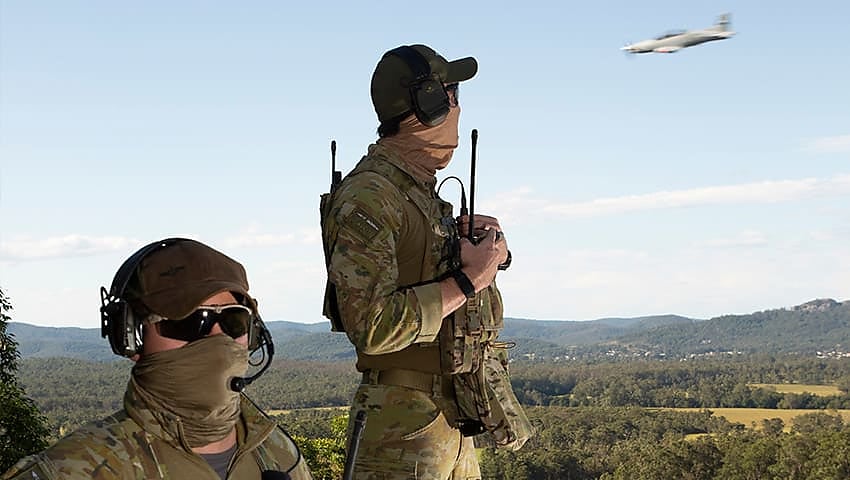Combat controllers from the Royal Australian Air Force’s No. 4 Squadron have completed a successful four weeks of Close Air Support (CAS) serials around RAAF Base Williamtown, near Newcastle, NSW, during Exercise Havoc Strike.
To continue reading the rest of this article, please log in.
Create free account to get unlimited news articles and more!
The RAAF No. 4 Squadron (4SQN) Combat Control Team (CCT) has the important job of being the first on the ground to assess the viability for aircraft and personnel arrival.
The RAAF CCT is comprised of combat controllers who have specialist skills in reconnaissance, assault zone control and clearance of an airfield.
Combat controllers provide a range of capabilities, including declaring a landing zone safe for aircraft to land, meteorology observation and controlling air strikes from the ground.
Internal to the exercise was the completion of the first module of the combat control category upgrade course, involving four experienced controllers drawn from operational teams.
Sergeant Scott, one of the students during Havoc Strike, said the exercise allowed the capability to simulate scenarios and problem sets that required the combat controllers to integrate, synchronise and control multi-domain assets and effects to achieve the commander's intent.
"Traditionally training has focused on the same outputs as any ADF Joint Terminal Attack Controllers [JTAC], which is a focus on kinetic strike. On Havoc Strike the participants are introduced to a more demanding operating environment, where they are required to advise on fifth-gen capabilities to enable mission planning," SGT Scott said.
While completely at home participating in physically demanding environments, the controllers found themselves operating at a slightly slower pace when they headed to the classroom to cover an in-depth analysis on current regional threat systems and briefings on RAAF and allied platforms and capabilities.
SGT Scott added, "When executing the plan we tried to integrate these capabilities on the ground under pressure. What that can look like is concurrently managing and safely de-conflicting airspace for multiple fixed and rotary wing assets, generating an effect on the signals spectrum to disrupt a target, coordinating intelligence, surveillance and reconnaissance [ISR] assets and providing precision strike in close proximity to friendly forces."
SGT Scott explained that the educational component of the exercise was what ensured success on the ground for the participants.
"Havoc Strike is a unique exercise as it is custom built by the squadron around the needs of the participants, this means we are able to adjust the training program as required. It's also supported by the 4SQN PC-21s, that are piloted by forward air controller-airborne [FAC(A)] certified pilots," he added.
"The exercise provided the first opportunity to work with the 4SQN PC-21 aircraft which were first introduced to 4SQN in late January 2020. 4SQN aircrew have been developing and refining CAS standard operating procedures to provide CAS training to ADF JTAC’s. Furthermore, the experience gained during Havoc Strike allowed the 4SQN aircrew to re-commence FAC(A) training, which had not been able to occur since the withdrawal of the PC-9/A(F) in October 2019."
The next phase of the combat control training continuum will begin in July with Exercise Havoc Drop.

 Login
Login







